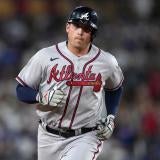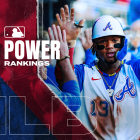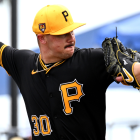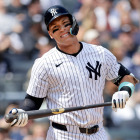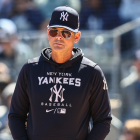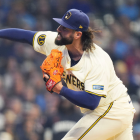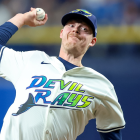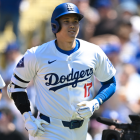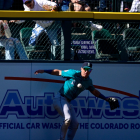On Thursday morning, the Cincinnati Reds made the long awaited decision to fire manager Bryan Price. Pitching coach Mack Jenkins was let go as well. Price had been on the hot seat for a long time, since as far back as 2015, the team finally decided it is time to move on.
The Reds currently have baseball's worst record at 3-15, and they've been outscored 100-54 in their 18 games. Their minus-46 run differential is the worst in baseball. Of course, the Reds were widely expected to have a poor record this season. SportsLine pegged them a true talent 71-win before the season. FanGraphs projects them as a 66-win team.
The team's poor start certainly played a role in the decision to fire Price. The biggest problem in Cincinnati is not their 2018 record, however. It's the rebuild process that has mostly stalled out. The Reds went 90-72 in 2013 and lost the NL Wild Card Game, which led to Dusty Baker being let go and Price being promoted from pitching coach to manager. Their full season records since:
- 2014: 76-86 (minus-17 run differential)
- 2015: 64-98 (minus-114 run differential)
- 2016: 68-94 (minus-138 run differential)
- 2017: 68-94 (minus-116 run differential)
The 2018 Reds may be worse than any of the 2014-17 teams, and unless they can play .500-ish ball the rest of the way (.486 ball, specifically), they're going to lose 90 games for the fourth straight season. The Reds haven't had four consecutive 90-loss seasons since way back in 1930-34, when they lost 90-plus game in five straight seasons.
It wasn't until after that 2014 season that the Reds decided to rebuild, and even then, the process played out slowly. Mat Latos and Alfredo Simon were traded during the 2014-15 offseason. Impending free agents Johnny Cueto and Mike Leake were traded at the 2015 deadline. Aroldis Chapman and Todd Frazier were moved during the 2015-16 offseason. Jay Bruce wasn't moved until the 2016 trade deadline. It took a while to tear things down.
At the time, the Reds did well target talented young players in the Simon (Eugenio Suarez), Latos (Anthony DeSclafani), and Cueto (Brandon Finnegan) trades. Those were the best young players those teams had the offer. Leake and Frazier helped land outfield fixtures Adam Duvall and Scott Schebler, respectively. The Bruce trade hasn't yielded anything worthwhile and the Chapman trade has been a disaster. He was traded for pennies on the dollar due to his pending domestic violence suspension.
Cincinnati's rebuild hasn't moved forward as quickly as hoped -- or much at all, really -- for two reasons: Bad decisions and bad luck. That's usually what lands a team in the cellar. The decision to drag out the sell-off led to poor returns for Bruce and Chapman, and lesser returns for impending free agents like Leake and Cueto. Heck, Zack Cozart was never traded at all. The team let him walk as a free agent last offseason without even getting a draft pick in return.
Even ignoring Chapman given the extenuating circumstances, the decision to prolong the sell-off rather than tear it down all at once a la the Houston Astros or Chicago White Sox robbed the team of value. One full year of Cueto had more trade value than a half-year. Two years of Frazier had more trade value than one year. So on and so forth. Rebuilding is a tough decision organizations don't make lightly. But once they make it, they have to act quickly and decisively. The Reds dragged it out.
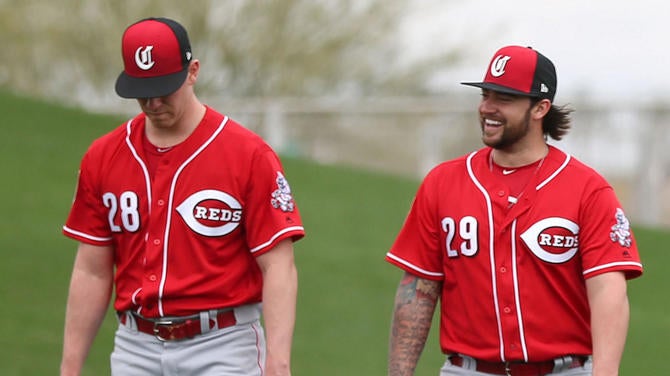
Back luck, moreso than bad decision-making, is really what has the Reds in a bind right now. DeSclafani and Finnegan have been besieged by injuries in recent years. Homer Bailey has been hurt and ineffective since signing his $105 million extension. Former top 100 prospects Cody Reed, Robert Stephenson, and Jose Peraza haven't blossomed as hoped. Devin Mesoraco got hurt. Billy Hamilton still hasn't figure out how to get on base consistently. On and on it goes.
That isn't to say the Reds lack young talent. Suarez is a long-term keeper, and at the minor league level, the Reds have potential stars in third baseman Nick Senzel and right-hander Hunter Greene. MLB.com placed four Reds on their annual top 100 prospects list earlier this year: Senzel (No. 7), Greene (No. 21), outfielder Taylor Trammell (No. 43), and right-hander Tyler Mahle (No. 84). There's talent in the organization. The problem has been turning that talent into core big leaguers.
That is all the long way of saying sometimes prospects and young players don't work out. Rebuilding teams hoard young players because attrition rate are quite high (especially for pitchers), so the more young players you have, the better. The Reds ran into some rotten luck with DeSclafani and Finnegan (and Bailey) getting hurt, ditto Reed and Stephenson spinning their wheels. There's still hope for them, but the Reds were hoping they would establish themselves by now, and it hasn't happened.
Roughly one-third of the league is rebuilding at the moment. Don't like the word tanking? Fine. But I count no fewer than seven teams that came into the season with no real plan to contend. And hey, they're not doing anything that is against the rules. The system promotes deep rebuilds. Everyone understandably points to the Astros and the Chicago Cubs as rebuild success stories, but, for every Cubs or Astros success story, there's a Reds team or Miami Marlins team getting stuck in the mud.
Perhaps Price simply isn't a good major league manager. It happens. Some guys are better coaches than managers. And even if that is the case, he was only part of the problem for the Reds, not the problem. They waiting too long to fully commit to a rebuild, and said rebuild has hit a lot of bumps along the way. The franchise now is not in significantly better shape than it was four years ago. Rebuilding is a wonderful idea on paper. The Reds are a reminder it is harder to pull off than it may seem.







